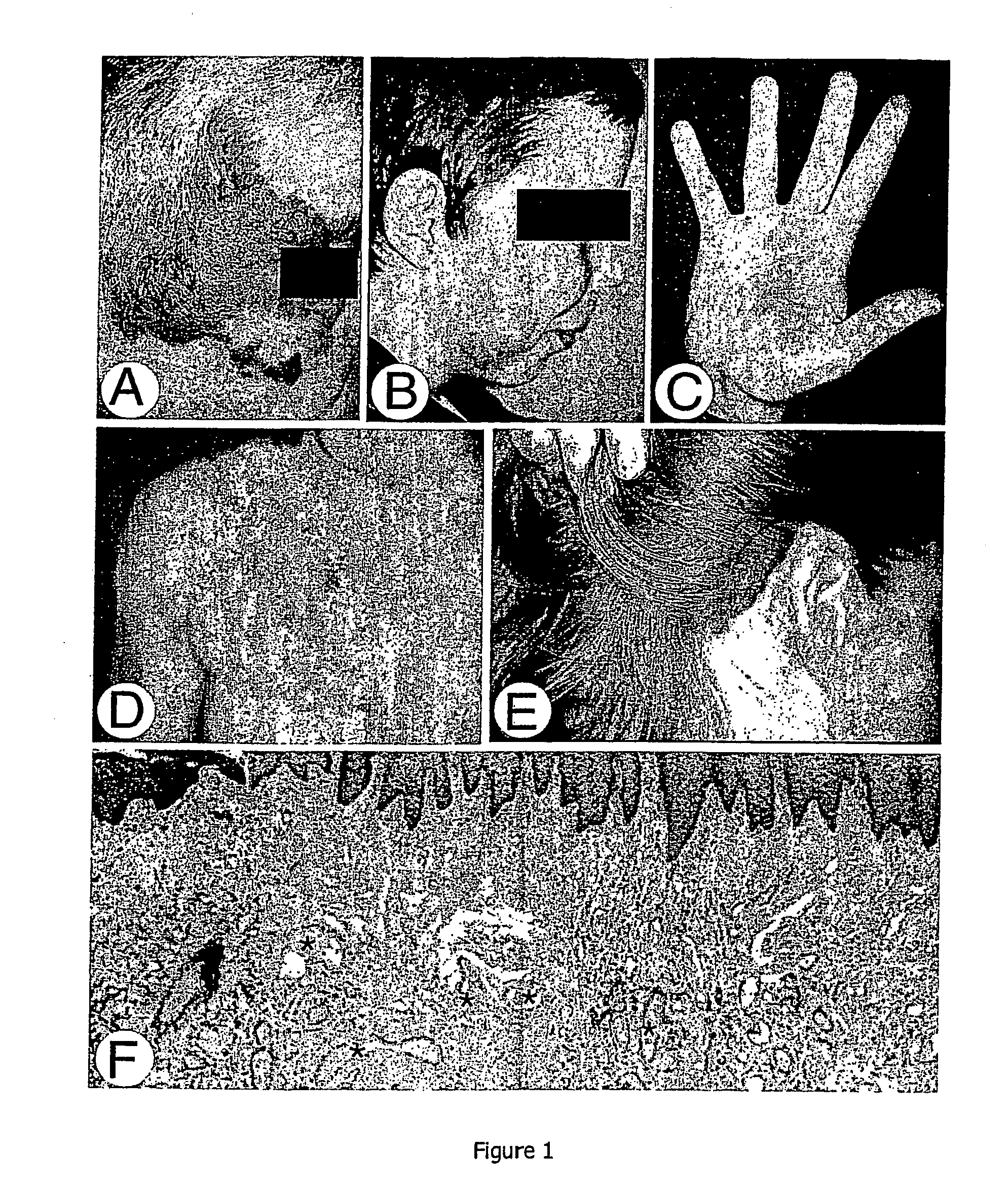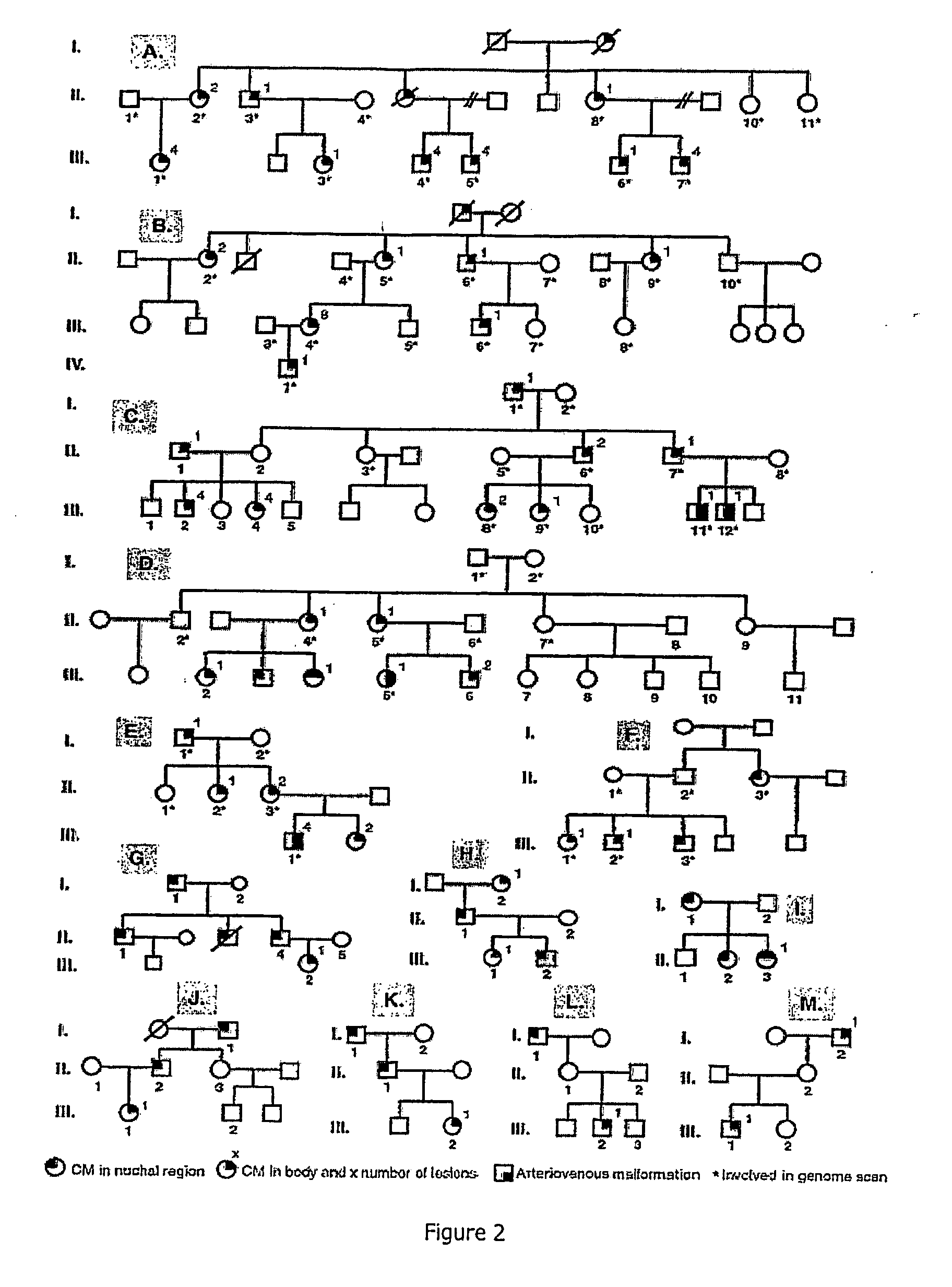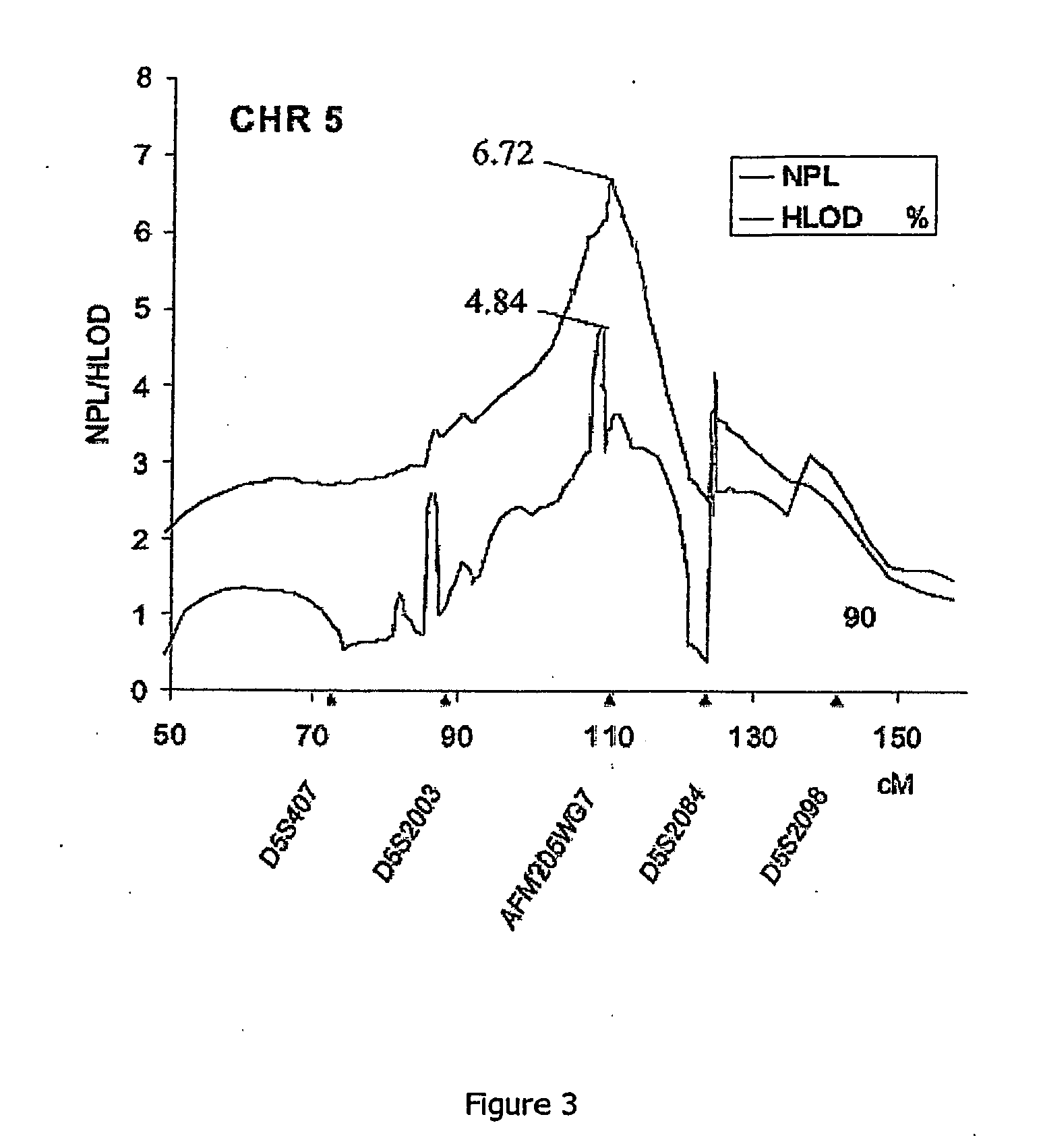Medical use of ras antagonists for the treatment of capillary malformation
a technology of capillary malformation and antagonist, which is applied in the field of vascular anomalies, can solve the problems of life-threatening complications, severe bleeding or neurologic consequences, and congestive heart failur
- Summary
- Abstract
- Description
- Claims
- Application Information
AI Technical Summary
Benefits of technology
Problems solved by technology
Method used
Image
Examples
example 1
Identification of the 23 cm Locus for Familial Capillary Malformation
Patients
[0086] Blood or buccal brush samples were collected from 60 affected and 51 unaffected individuals (FIG. 2). Patients were clinically examined by a plastic surgeon (L M Boon, J B Mulliken and S Watanabe), or general practitioner (H Grynberg). In the 13 families involved in this study, most CMs were pink-to-purple macular lesions, measuring a few centimeters in diameter (FIG. 1). All subjects with a CM of at least 1 cm in diameter were considered affected. Individuals with only one lesion, smaller than 1 cm, or with faint nuchal stain, reminiscent of a fading birthmark, were considered to be unaffected. Out of 60 affected subjects, 19 had a lesion on the face, 15 in the nuchal region and 26 in other parts of the body. Fifteen subjects had multiple lesions (FIG. 2). In subject III-12, in family C, and subject III-1 in family E, an arteriovenous malformation underlay the cutaneous vascular stain (FIG. 2). S...
example 2
Reduction of the Susceptible Region to the CMC-1 Locus
Patients
[0093] Families CM8, CM11 and CM20 have been reported earlier (Eerola et al., 2002) and are the same families as families C, D and E of Example 1. The atypical CMs were multiple small (1-2 cm in diameter) round-to-oval and pinkish-red in color. CM-associated vascular anomalies and tissue hypertrophy characterized the following phenotypes. In family PW1, subject III-1 had Parkes Weber syndrome (FIG. 5) and subject III-2 had an intracranial AVM as well as multiple cutaneous CMs. In family CM45, subject III-15 had an intracranial AVM, and five cutaneous CMs of the extremities, and subject IV-11 had a cutaneous AVM of the ankle, and three cutaneous CMs located on the face, thorax and thigh. In family CM8, subject III-11 had a left intramaxillary AVM causing bony hypertrophy, and an extensive hemifacial CM with soft tissue hypertrophy, and subject III-12 had a CM of the mid lower lip with hypertrophy, and an intramandibular...
example 3
Analysis of the Mutations in the CMC-1 Locus
SSCP and Heteroduplex Analyses
[0096] The genomic sequences containing the RASA1 gene were identified by a blast-homology search with the RASA1 mRNA sequence (NM—002890.1) on the human genome sequence at the NCBI blast server. Homo sapiens chromosome 5 working draft sequence NT—037660.1 containing the gene was retrieved from the entrez database. 27 sets of primers (represented by SEQ ID NOs 3 to 54, Table 1) were designed to amplify all the 25 exons including exon-intron boundaries. The isoform 2-specific exon 1 was also screened.
[0097] The primers as represented in Table 1 were used as pairs to amplify fragments of the RASA1 gene, as follows: RAS1DF / RAS1DR, RAS1FF / RAS1FR, RAS2F / RAS2R, RAS3F / RAS3R . . . The first exon was amplified in two separate fragments using primer pairs RAS1DF / RAS1DR and RAS1FF / RAS1FR, and exons 16 and 17 were amplified in a single amplicon using primer pair RAS16&17F / RAS16&17R. All the other exons were amplified ...
PUM
 Login to View More
Login to View More Abstract
Description
Claims
Application Information
 Login to View More
Login to View More - R&D
- Intellectual Property
- Life Sciences
- Materials
- Tech Scout
- Unparalleled Data Quality
- Higher Quality Content
- 60% Fewer Hallucinations
Browse by: Latest US Patents, China's latest patents, Technical Efficacy Thesaurus, Application Domain, Technology Topic, Popular Technical Reports.
© 2025 PatSnap. All rights reserved.Legal|Privacy policy|Modern Slavery Act Transparency Statement|Sitemap|About US| Contact US: help@patsnap.com



